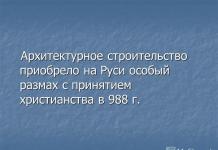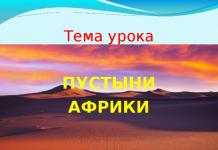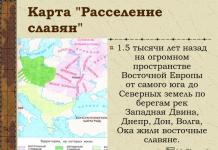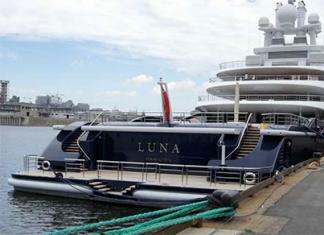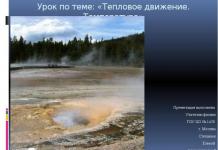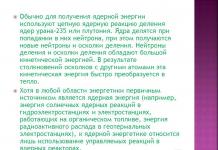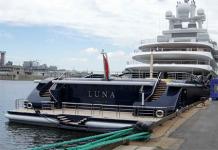Slide 2
TARGET:
Assess the positive and negative aspects of the use of nuclear energy in modern society. Generate ideas related to the threat to peace and humanity when using nuclear energy.
Slide 3
Application of nuclear energy
Energy is the foundation. All the benefits of civilization, all material spheres of human activity - from washing clothes to exploring the Moon and Mars - require energy consumption. And the further, the more. Today, atomic energy is widely used in many sectors of the economy. Powerful submarines and surface ships with nuclear power plants are being built. The peaceful atom is used to search for minerals. Radioactive isotopes have found widespread use in biology, agriculture, medicine, and space exploration.
Slide 4
Energy: “FOR”
a) Nuclear energy is by far the best form of energy production. Economical, high power, environmentally friendly when used correctly. b) Nuclear power plants, compared to traditional thermal power plants, have an advantage in fuel costs, which is especially evident in those regions where there are difficulties in providing fuel and energy resources, as well as a steady upward trend in the cost of fossil fuel production. c) Nuclear power plants are also not prone to polluting the natural environment with ash, flue gases with CO2, NOx, SOx, and waste water containing petroleum products.
Slide 5
Nuclear power plant, thermal power plant, hydroelectric power station - modern civilization
Modern civilization is unthinkable without electrical energy. The production and use of electricity is increasing every year, but the specter of a future energy famine is already looming before humanity due to the depletion of fossil fuel deposits and increasing environmental losses when obtaining electricity. The energy released in nuclear reactions is millions of times higher than that produced by conventional chemical reactions (for example, combustion reactions), so that the calorific value of nuclear fuel is immeasurably greater than that of conventional fuel. Using nuclear fuel to generate electricity is an extremely tempting idea. The advantages of nuclear power plants (NPP) over thermal power plants (CHP) and hydroelectric power plants (HPP) are obvious: there is no waste, no gas emissions, there is no need to carry out huge volumes of construction, build dams and bury fertile land on bottom of reservoirs. Perhaps the only more environmentally friendly than nuclear power plants are power plants that use solar or wind energy. But both wind turbines and solar power stations are still low-power and cannot meet people’s needs for cheap electricity - and this need is growing faster and faster. And yet, the feasibility of constructing and operating nuclear power plants is often questioned due to the harmful effects of radioactive substances on the environment and humans.
Slide 6
Prospects for nuclear energy
After a good start, our country has fallen behind the leading countries of the world in the field of nuclear energy development in all respects. Of course, nuclear energy can be abandoned altogether. This will completely eliminate the risk of human exposure and the threat of nuclear accidents. But then, to meet energy needs, it will be necessary to increase the construction of thermal power plants and hydroelectric power plants. And this will inevitably lead to large pollution of the atmosphere with harmful substances, to the accumulation of excess amounts of carbon dioxide in the atmosphere, changes in the Earth’s climate and disruption of the heat balance on a planetary scale. Meanwhile, the specter of energy starvation is beginning to really threaten humanity. Radiation is a formidable and dangerous force, but with the right attitude, it is quite possible to work with it. It is typical that those who are least afraid of radiation are those who constantly deal with it and are well aware of all the dangers associated with it. In this sense, it is interesting to compare statistics and intuitive assessments of the degree of danger of various factors in everyday life. Thus, it has been established that the largest number of human lives are claimed by smoking, alcohol and cars. Meanwhile, according to people from population groups of different ages and education, the greatest danger to life is posed by nuclear energy and firearms (the damage caused to humanity by smoking and alcohol is clearly underestimated). Specialists who can most qualifiedly assess the advantages and possibilities of using nuclear Energy experts believe that humanity can no longer do without atomic energy. Nuclear energy is one of the most promising ways to satisfy humanity's energy hunger in the face of energy problems associated with the use of fossil fuels.
Slide 7
Advantages of nuclear energy
There are so many benefits of nuclear power plants. They are completely independent of uranium mining sites. Nuclear fuel is compact and has a fairly long service life. Nuclear power plants are consumer-oriented and are becoming in demand in places where there is an acute shortage of fossil fuels and the demand for electricity is very high. Another advantage is the low cost of the energy produced and relatively low construction costs. Compared to thermal power plants, nuclear power plants do not emit such a large amount of harmful substances into the atmosphere, and their operation does not lead to an increase in the greenhouse effect. At the moment, scientists are faced with the task of increasing the efficiency of uranium use. It is solved using fast breeder reactors (FBRs). Together with thermal neutron reactors, they increase energy production per ton of natural uranium by 20-30 times. With the full use of natural uranium, its extraction from very poor ores and even its extraction from sea water becomes profitable. The use of nuclear power plants with RBN leads to some technical difficulties, which are currently being solved. Russia can use highly enriched uranium released as a result of the reduction in the number of nuclear warheads as fuel.
Slide 8
Medicine
Diagnostic and therapeutic methods have shown to be highly effective. When cancer cells are irradiated with γ-rays, they stop dividing. And if the cancer is at an early stage, then the treatment is successful. Small amounts of radioactive isotopes are used for diagnostic purposes. For example, radioactive barium is used for fluoroscopy of the stomach. Isotopes are successfully used in the study of iodine metabolism in the thyroid gland
Slide 9
The best
Kashiwazaki-Kariwa is the largest nuclear power plant in the world in terms of installed capacity (as of 2008) and is located in the Japanese city of Kashiwazaki, Niigata Prefecture. There are five boiling water reactors (BWRs) and two advanced boiling water reactors (ABWRs) in operation, with a combined capacity of 8,212 GigaWatts.
Slide 10
Zaporozhye NPP
Slide 11
Alternative replacement for nuclear power plants
Energy of sun. The total amount of solar energy reaching the Earth's surface is 6.7 times greater than the global potential of fossil fuel resources. Using just 0.5% of this reserve could completely cover the world's energy needs for millennia. To the North The technical potential of solar energy in Russia (2.3 billion tons of conventional fuel per year) is approximately 2 times higher than today's fuel consumption.
Slide 12
The warmth of the earth. Geothermal energy - literally translated means: earth's thermal energy. The volume of the Earth is approximately 1085 billion cubic km and all of it, with the exception of a thin layer of the earth's crust, has a very high temperature. If we also take into account the heat capacity of the Earth's rocks, it becomes clear that geothermal heat is undoubtedly the largest source of energy that man currently has at his disposal. Moreover, this is energy in its pure form, since it already exists as heat, and therefore it does not require burning fuel or creating reactors to obtain it.
Slide 13
Advantages of water-graphite reactors
The advantages of a channel graphite reactor are the possibility of using graphite simultaneously as a moderator and a structural material for the core, which allows the use of process channels in replaceable and non-replaceable versions, the use of fuel rods in a rod or tubular design with one-sided or all-round cooling by their coolant. The design diagram of the reactor and core makes it possible to organize fuel refueling in an operating reactor, to apply the zonal or sectional principle of constructing the core, allowing profiling of energy release and heat removal, the widespread use of standard designs, and the implementation of nuclear superheating of steam, i.e., superheating of steam directly in the core.
Slide 14
Nuclear Power and the Environment
Today, nuclear energy and its impact on the environment are the most pressing issues at international congresses and meetings. This question became especially acute after the accident at the Chernobyl nuclear power plant (ChNPP). At such congresses, issues related to installation work at nuclear power plants are resolved. As well as issues affecting the condition of working equipment at these stations. As you know, the operation of nuclear power plants is based on the splitting of uranium into atoms. Therefore, the extraction of this fuel for stations is also an important issue today. Many issues related to nuclear power plants are related to the environment in one way or another. Although the operation of nuclear power plants brings a large amount of useful energy, unfortunately, all the “pros” in nature are compensated by their “cons”. Nuclear energy is no exception: in the operation of nuclear power plants they face problems of disposal, storage, processing and transportation of waste.
Slide 15
How dangerous is nuclear power?
Nuclear energy is an actively developing industry. It is obvious that it is destined for a great future, since reserves of oil, gas, and coal are gradually drying up, and uranium is a fairly common element on Earth. But it should be remembered that nuclear energy is associated with increased danger for people, which, in particular, manifests itself in the extremely adverse consequences of accidents with the destruction of nuclear reactors.
Slide 16
Energy: “against”
“against” nuclear power plants: a) The terrible consequences of accidents at nuclear power plants. b) Local mechanical impact on the relief - during construction. c) Damage to individuals in technological systems - during operation. d) Runoff of surface and groundwater containing chemical and radioactive components. e) Changes in the nature of land use and metabolic processes in the immediate vicinity of the nuclear power plant. f) Changes in microclimatic characteristics of adjacent areas.
Slide 17
Not just radiation
The operation of nuclear power plants is accompanied not only by the danger of radiation contamination, but also by other types of environmental impacts. The main effect is thermal effect. It is one and a half to two times higher than from thermal power plants. During the operation of a nuclear power plant, there is a need to cool the waste water vapor. The simplest way is cooling with water from a river, lake, sea or specially constructed pools. Water heated by 5-15 °C returns to the same source. But this method carries with it the danger of deteriorating the environmental situation in the aquatic environment at the locations of nuclear power plants. More widely used is a water supply system using cooling towers, in which water is cooled due to its partial evaporation and cooling. Small losses are replenished by constant replenishment of fresh water. With such a cooling system, a huge amount of water vapor and droplet moisture is released into the atmosphere. This can lead to an increase in the amount of precipitation, the frequency of fog formation, and cloudiness. In recent years, an air-cooling system for water vapor has begun to be used. In this case, there is no loss of water, and it is most environmentally friendly. However, such a system does not work at high average ambient temperatures. In addition, the cost of electricity increases significantly.
Slide 18
Invisible Enemy
Three radioactive elements - uranium, thorium and actinium - are primarily responsible for the earth's natural radiation. These chemical elements are unstable; When they decay, they release energy or become sources of ionizing radiation. As a rule, the decay produces an invisible, tasteless and odorless heavy gas, radon. It exists as two isotopes: radon-222, a member of the radioactive series formed by the decay products of uranium-238, and radon-220 (also called thoron), a member of the radioactive series thorium-232. Radon is constantly formed in the depths of the Earth, accumulates in rocks, and then gradually moves through cracks to the surface of the Earth. A person very often receives radiation from radon while at home or at work and without knowing the danger - in a closed, unventilated room , where its concentration of this gas, a source of radiation, is increased. Radon penetrates into a house from the ground - through cracks in the foundation and through the floor - and accumulates mainly on the lower floors of residential and industrial buildings. But there are also cases where residential buildings and industrial buildings are built directly on old dumps of mining enterprises, where radioactive elements are present in significant quantities. If materials such as granite, pumice, alumina, phosphogypsum, red brick, calcium silicate slag are used in construction production, the wall material becomes a source of radon radiation. Natural gas used in gas stoves (especially liquefied propane in cylinders) is also a potential source radon And if water for domestic needs is pumped out from deep-lying water layers saturated with radon, then there is a high concentration of radon in the air even when washing clothes! By the way, it was found that the average concentration of radon in the bathroom is usually 40 times higher than in living rooms and several times higher than in the kitchen.
Slide 19
Radioactive "garbage"
Even if a nuclear power plant operates perfectly and without the slightest failure, its operation inevitably leads to the accumulation of radioactive substances. Therefore, people have to solve a very serious problem, the name of which is safe waste storage. Waste from any industry with the huge scale of energy production, various products and materials creates a huge problem. Environmental and atmospheric pollution in many areas of our planet is causing concern and concern. We are talking about the possibility of preserving flora and fauna not in their original form, but at least within the limits of minimum environmental standards. Radioactive waste is generated at almost all stages of the nuclear cycle. They accumulate in the form of liquid, solid and gaseous substances with varying levels of activity and concentration. Most waste is low-level: water used to clean reactor gases and surfaces, gloves and shoes, contaminated tools and burnt-out light bulbs from radioactive rooms, spent equipment, dust, gas filters and much more.
Slide 20
Fighting radioactive waste
Gases and contaminated water are passed through special filters until they reach the purity of atmospheric air and drinking water. Filters that have become radioactive are recycled along with solid waste. They are mixed with cement and turned into blocks or poured into steel containers together with hot bitumen. High-level waste is the most difficult to prepare for long-term storage. It is best to turn such “garbage” into glass and ceramics. To do this, the waste is calcined and fused with substances that form a glass-ceramic mass. It is calculated that it will take at least 100 years to dissolve 1 mm of the surface layer of such a mass in water. Unlike many chemical wastes, the danger of radioactive waste decreases over time. Most radioactive isotopes have a half-life of about 30 years, so within 300 years they will almost completely disappear. So, for the final disposal of radioactive waste, it is necessary to build such long-term storage facilities that would reliably isolate the waste from its penetration into the environment until the complete decay of radionuclides. Such storage facilities are called burial grounds.
Slide 21
Explosion at the Chernobyl nuclear power plant on April 26, 1986.
On April 25, the 4th power unit was shut down for scheduled maintenance, during which several equipment tests were planned. In accordance with the program, the reactor power was reduced, and then problems began related to the phenomenon of “xenon poisoning” (the accumulation of the xenon isotope in a reactor operating at reduced power, further inhibiting the operation of the reactor). To compensate for the poisoning, the absorbing rods were raised and power began to increase. What happened next is not exactly clear. The report of the International Nuclear Safety Advisory Group noted: “It is not known with certainty what started the power surge that led to the destruction of the reactor at the Chernobyl nuclear power plant.” They tried to suppress this sudden jump by lowering the absorbing rods, but due to their poor design, it was not possible to slow down the reaction, and an explosion occurred.
Slide 22
Chernobyl
Analysis of the Chernobyl accident convincingly confirms that radioactive pollution of the environment is the most important environmental consequence of radiation accidents with releases of radionuclides, the main factor influencing the health and living conditions of people in areas exposed to radioactive contamination.
Slide 23
Japanese Chernobyl
Recently there was an explosion at the Fukushima 1 nuclear power plant (Japan) due to a strong earthquake. The accident at the Fukushima nuclear power plant was the first disaster at a nuclear facility caused by the impact, albeit indirect, of natural disasters. Until now, the largest accidents have been of an “internal” nature: they were caused by a combination of unsuccessful design elements and human factors.
Slide 24
Explosion in Japan
At the Fukushima-1 station, located in the prefecture of the same name, on March 14, hydrogen that had accumulated under the roof of the third reactor exploded. According to Tokyo Electric Power Co (TEPCO), the operator of the nuclear power plant. Japan informed the International Atomic Energy Agency (IAEA) that as a result of the explosion at the Fukushima-1 nuclear power plant, background radiation in the area of the accident exceeded the permissible limit.
Slide 25
Consequences of radiation:
Mutations Cancer diseases (thyroid gland, leukemia, breast, lung, stomach, intestines) Hereditary disorders Sterility of the ovaries in women. Dementia
Slide 26
Tissue sensitivity coefficient at equivalent radiation dose
Slide 27
Radiation results
Slide 28
Conclusion
Factors “Pro” of nuclear power plants: 1. Nuclear energy is by far the best type of energy production. Economical, high power, environmentally friendly when used correctly. 2. Nuclear power plants, compared to traditional thermal power plants, have an advantage in fuel costs, which is especially evident in those regions where there are difficulties in providing fuel and energy resources, as well as a steady upward trend in the cost of fossil fuel production. 3. Nuclear power plants are also not prone to polluting the natural environment with ash, flue gases with CO2, NOx, SOx, and waste water containing petroleum products. Factors “against” nuclear power plants: 1. Terrible consequences of accidents at nuclear power plants. 2. Local mechanical impact on the terrain - during construction. 3. Damage to individuals in technological systems - during operation. 4. Runoff of surface and groundwater containing chemical and radioactive components. 5. Changes in the nature of land use and metabolic processes in the immediate vicinity of the nuclear power plant. 6. Changes in microclimatic characteristics of adjacent areas.
View all slides
NUCLEAR energy (nuclear energy) - a branch of energy that uses nuclear energy for electrification and heating; a field of science and technology that develops methods and means for converting nuclear energy into electrical and thermal energy. The basis of nuclear energy is nuclear power plants. The first nuclear power plant (5 MW), which marked the beginning of the use of nuclear energy for peaceful purposes, was launched in the USSR in the beginning. 90s St. worked in 27 countries around the world. 430 nuclear power reactors with a total capacity of approx. 340 GW. According to experts, the share of nuclear energy in the overall structure of electricity generation in the world will continuously increase, provided that the basic principles of the safety concept for nuclear power plants are implemented. The main principles of this concept are a significant modernization of modern nuclear reactors, strengthening measures to protect the population and the environment from harmful technogenic impacts, training highly qualified personnel for nuclear power plants, developing reliable storage facilities for radioactive waste, etc.

Typically, to obtain nuclear energy, a nuclear chain reaction of fission of uranium-235 or plutonium nuclei is used. Nuclei fission when a neutron hits them, producing new neutrons and fission fragments. Fission neutrons and fission fragments have high kinetic energy. As a result of collisions of fragments with other atoms, this kinetic energy is quickly converted into heat. Although in any field of energy the primary source is nuclear energy (for example, the energy of solar nuclear reactions in hydroelectric and fossil fuel power plants, the energy of radioactive decay in geothermal power plants), nuclear energy refers only to the use of controlled reactions in nuclear reactors.




The main purpose of power plants is to supply electricity to industrial enterprises, agricultural production, electrified transport and the population. The inseparability of energy production and consumption places very high demands on the reliability of power plants, since interruptions in the supply of electricity and heat affect not only the economic indicators of the station itself, but also on the indicators of the industrial enterprises and transport it serves. Currently, nuclear power plants operate as condensing power plants. Sometimes they are also called nuclear power plants. Nuclear power plants designed to supply not only electricity, but also heat, are called nuclear combined heat and power plants (CHP). For now, only their projects are being developed.

A) Single-circuit B) Double-circuit C) Partially double-circuit D) Three-circuit 1 - reactor; 2 - steam turbine; 3 - electric generator; 4 - capacitor; 5 - feed pump; 6 - circulation pump: 7 - steam generator; 8 - volume compensator; 9 - drum separator; 10 - intermediate heat exchanger; 11 - liquid metal pump

The classification of nuclear power plants depends on the number of circuits on it. Nuclear power plants are classified as single-circuit, double-circuit, partially double-circuit and triple-circuit. If the contours of the coolant and working fluid coincide, then such a nuclear power plant; called single-circuit. Steam generation occurs in the reactor, the steam is sent to the turbine, where, expanding, it produces work, which is converted into electricity in the generator. After all the steam has condensed in the condenser, the condensate is pumped back into the reactor. Thus, the working fluid circuit is at the same time a coolant circuit, and sometimes a moderator circuit, and turns out to be closed. The reactor can operate with both natural and forced circulation of the coolant through an additional internal circuit of the reactor on which the corresponding pump is installed.


NUCLEAR weapons - a set of nuclear weapons, means of delivering them to the target and control means. Refers to weapons of mass destruction; has enormous destructive power. Based on the power of charges and range, nuclear weapons are divided into tactical, operational-tactical and strategic. The use of nuclear weapons in war is disastrous for all humanity. Atomic bomb Hydrogen bomb


The first atomic bomb was used by the American army after World War II on Japanese territory. Effect of an atomic bomb Nuclear, or atomic, is a type of weapon in which an explosion occurs under the influence of energy released during the fission of atomic nuclei. This is the most dangerous type of weapon on our planet. If one atomic bomb explodes in a densely populated area, the number of human casualties will exceed several million. In addition to the effect of the shock wave generated during the explosion, its main impact is radioactive contamination of the area in the area of the explosion, which persists for many years. Currently, the following officially have nuclear weapons: the USA, Russia, Great Britain (since 1952), France (since 1960), China (since 1964), India (since 1974), Pakistan (since 1998) and the DPRK (since 2006). A number of countries, such as Israel and Iran, have small stockpiles of nuclear weapons, but they are not yet officially considered nuclear powers.






























1 of 29
Presentation on the topic:
Slide no. 1

Slide description:
Slide no. 2

Slide description:
Slide no. 3

Slide description:
Hydroelectric power plants People have long been thinking about how to make rivers work. Already in ancient times - in Egypt, China, India - water mills for grinding grain appeared long before windmills - in the state of Urartu (in the territory of present-day Armenia), but were known back in the 13th century. BC e.One of the first power plants were “Hydroelectric Power Plants”. These power plants were built on mountain rivers with quite strong currents. The construction of hydroelectric power stations made it possible to make many rivers navigable, since the structure of the dams raised the water level and flooded river rapids, which prevented the free passage of river vessels.
Slide no. 4

Slide description:
Conclusions: A dam is needed to create water pressure. However, hydroelectric dams worsen the living conditions of aquatic fauna. Dammed rivers, having slowed down, bloom, and vast areas of arable land go under water. Settled areas (if a dam is built) will be flooded, the damage that will be caused is incomparable with the benefits of building a hydroelectric power station. In addition, a system of locks is needed for the passage of ships and fish passages or water intake structures for irrigating fields and water supply. And although hydroelectric power plants have considerable advantages over thermal and nuclear power plants, since they do not require fuel and therefore generate cheaper electricity
Slide no. 5

Slide description:
Thermal power plants At thermal power plants, the source of energy is fuel: coal, gas, oil, fuel oil, oil shale. The efficiency of thermal power plants reaches 40%. Most of the energy is lost along with the release of hot steam. From an environmental point of view, thermal power plants are the most polluting. The activity of thermal power plants is integrally associated with the combustion of huge amounts of oxygen and the formation of carbon dioxide and oxides of other chemical elements. When combined with water molecules, they form acids, which fall on our heads in the form of acid rain. Let's not forget about the "greenhouse effect" - its influence on climate change is already being observed!
Slide no. 6

Slide description:
Nuclear power plant Supplies of energy sources are limited. According to various estimates, there are 400-500 years of coal deposits left in Russia at the current level of production, and even less gas - 30-60 years. And here nuclear energy comes first. Nuclear power plants are beginning to play an increasingly important role in the energy sector. Currently, nuclear power plants in our country provide about 15.7% of electricity. A nuclear power plant is the basis of the energy sector that uses nuclear energy for the purposes of electrification and heating.
Slide no. 7

Slide description:
Conclusions: Nuclear energy is based on the fission of heavy nuclei by neutrons with the formation of two nuclei from each - fragments and several neutrons. This releases colossal energy, which is subsequently spent on heating the steam. The operation of any plant or machine, in general any human activity, is associated with the possibility of a risk to human health and the environment. People tend to be more wary of new technologies, especially if they have heard about possible accidents. And nuclear power plants are no exception.
Slide no. 8

Slide description:
Wind power plants For a very long time, seeing the destruction that storms and hurricanes can bring, people thought about whether it was possible to use wind energy. Wind energy is very strong. This energy can be obtained without polluting the environment. But wind has two significant drawbacks: energy is highly dispersed in space and the wind is unpredictable - it often changes direction, suddenly dies down even in the windiest areas of the globe, and sometimes reaches such strength that it breaks windmills. To obtain wind energy, a variety of designs are used: from multi-bladed “daisy” and propellers like airplane propellers with three, two, or even one blade to vertical rotors. Vertical structures are good because they catch wind from any direction; the rest have to turn with the wind.
Slide no. 9

Slide description:
Conclusions: The construction, maintenance and repair of wind turbines that operate 24 hours a day in the open air in any weather are not cheap. Wind power plants of the same capacity as hydroelectric power plants, thermal power plants or nuclear power plants, in comparison with them, must occupy a very large area in order to somehow compensate for the variability of the wind. Windmills are placed so that they do not block each other. Therefore, they build huge “wind farms” in which wind turbines stand in rows over a vast space and work for a single network. In calm weather, such a power plant can use water collected at night. The placement of wind turbines and reservoirs require large areas that are used for arable land. In addition, wind power plants are not harmless: they interfere with the flights of birds and insects, make noise, reflect radio waves with rotating blades, interfering with the reception of television programs in nearby populated areas.
Slide no. 10

Slide description:
Solar power plants In the thermal balance of the Earth, solar radiation plays a decisive role. The power of radiation incident on the Earth determines the maximum power that can be generated on Earth without significantly disturbing the thermal balance. The intensity of solar radiation and the duration of sunshine in the southern regions of the country make it possible, with the help of solar panels, to obtain a sufficiently high temperature of the working fluid for its use in thermal installations.
Slide no. 11

Slide description:
Conclusions: Great dissipation of energy and instability of its supply are the disadvantages of solar energy. These shortcomings are partially compensated by the use of storage devices, but still the Earth’s atmosphere interferes with the production and use of “clean” solar energy. To increase the power of solar power plants, it is necessary to install a large number of mirrors and solar panels - heliostats, which must be equipped with an automatic tracking system for the position of the sun. The transformation of one type of energy into another is inevitably accompanied by the release of heat, which leads to overheating of the earth's atmosphere.
Slide no. 12

Slide description:
Geothermal energy About 4% of all water reserves on our planet are concentrated underground - in rock strata. Waters whose temperature exceeds 20 degrees Celsius are called thermal. Groundwater is heated as a result of radioactive processes occurring in the bowels of the earth. People have learned to use the deep heat of the Earth for economic purposes. In countries where thermal waters come close to the surface of the earth, geothermal power plants (geothermal power plants) are built. Geothermal power plants are designed relatively simply: there is no boiler room, fuel supply equipment, ash collectors and many other devices necessary for thermal power plants. Since the fuel at such power plants is free, the cost of generated electricity is low.
Slide no. 13

Slide description:
Nuclear energy The energy sector that uses nuclear energy for electrification and heating; A field of science and technology that develops methods and means for converting nuclear energy into electrical and thermal energy. The basis of nuclear energy is nuclear power plants. The first nuclear power plant (5 MW), which marked the beginning of the use of nuclear energy for peaceful purposes, was launched in the USSR in 1954. By the beginning of the 90s. Over 430 nuclear power reactors with a total capacity of about 340 GW operated in 27 countries around the world. According to experts, the share of nuclear energy in the overall structure of electricity generation in the world will continuously increase, provided that the basic principles of the safety concept for nuclear power plants are implemented.
Slide no. 14

Slide description:
Development of nuclear energy 1942 in the USA, under the leadership of Enrico Fermi, the first nuclear reactor was built FERMI (Fermi) Enrico (1901-54), Italian physicist, one of the creators of nuclear and neutron physics, founder of scientific schools in Italy and the USA, foreign corresponding member USSR Academy of Sciences (1929). In 1938 he emigrated to the USA. Developed quantum statistics (Fermi-Dirac statistics; 1925), the theory of beta decay (1934). Discovered (with collaborators) artificial radioactivity caused by neutrons, the moderation of neutrons in matter (1934). He built the first nuclear reactor and was the first to carry out a nuclear chain reaction in it (December 2, 1942). Nobel Prize (1938).
Slide no. 15

Slide description:
Development of nuclear energy In 1946, the first European reactor was created in the Soviet Union under the leadership of Igor Vasilyevich Kurchatov. KURCHATOV Igor Vasilyevich (1902/03-1960), Russian physicist, organizer and leader of work on atomic science and technology in the USSR, academician of the USSR Academy of Sciences (1943), three times Hero of Socialist Labor (1949, 1951, 1954). Researched ferroelectrics. Together with his colleagues, he discovered nuclear isomerism. Under the leadership of Kurchatov, the first domestic cyclotron was built (1939), the spontaneous fission of uranium nuclei was discovered (1940), mine protection for ships was developed, the first nuclear reactor in Europe (1946), the first atomic bomb in the USSR (1949), and the world's first thermonuclear bomb ( 1953) and nuclear power plant (1954). Founder and first director of the Institute of Atomic Energy (since 1943, since 1960 - named after Kurchatov).
Description of the presentation by individual slides:
1 slide
Slide description:
2 slide
Slide description:
The whole world, covering from earth to heaven, Having alarmed more than one generation, Scientific progress is sweeping across the planet. What is behind this phenomenon? Man went into space and was on the moon. Nature has fewer and fewer secrets. But any discovery is an aid to war: The same atom and the same missiles... How to use knowledge is the concern of people. It’s not science – the scientist is in charge. Who gave people fire - was Prometheus right? How will progress turn out for the planet?
3 slide
Slide description:
Discovery of Antoine Becquerel February 1896 Paris Experiment: A cross was placed under a saucer of uranium salts placed on a photographic plate wrapped in opaque paper. But the exhibition of salts had to be postponed due to cloudy weather. And while waiting for the sun, I placed the entire structure in a drawer of the cupboard. On Sunday, March 1, 1896, without waiting for clear weather, he decided, just in case, to develop a photographic plate and, to his surprise, discovered the clear contours of a cross on it. Uranium salts emitted radiation that penetrated through layers of opaque paper and left a clear mark on the photographic plate without “recharging” with light 1903 Nobel Prize for the discovery of natural radioactivity
4 slide
Slide description:
Discovery of radium Pierre Curie 1859 - 1906 Maria Sklodowska - Curie 1867 - 1934 The rays discovered by A. Becquerel interested Marie Curie. It turned out that such rays come not only from uranium. The word "ray" is Latin for "radius". Therefore, Maria proposed calling all substances that emit invisible rays radioactive. Maria's work greatly interested her husband Pierre. Soon they discovered rays that were sent by an unknown element! They called this element polonium, and some time later they discovered radium. And not only discover, but also extract a tiny piece of radium. Awarded the Nobel Prize for the discovery of the phenomenon of radioactivity
5 slide
Slide description:
In 1961 N.S. Khrushchev loudly declared that the USSR had a bomb containing 100 million tons of TNT. “But,” he noted, “we will not detonate such a bomb, because if we detonate it even in the most remote places, then even then we can break out our windows.” From the history
6 slide
Slide description:
Igor Vasilyevich Kurchatov is the man who gave the country security 01/02/1903 - 02/07/1960 1932. Kurchatov was one of the first in Russia to study the physics of the atomic nucleus. In 1934, he investigated artificial radioactivity and discovered nuclear isomerism - the decay of identical atoms at different rates. In 1940, Kurchatov, together with G.N. Flerov and K.A. Petrzhak, discovered that uranium atomic nuclei can undergo fission without the help of neutron irradiation - spontaneously. In 1943 he began working on a project to create atomic weapons. 1946 - the first European reactor under the leadership of I.V. Kurchatov in Obninsk. The creation of the domestic atomic bomb was completed by 1949, and in 1953 the hydrogen bomb appeared. The name of Kurchatov is also associated with the construction of the world’s first nuclear power plant, which produced electricity in 1954. It is noteworthy that it was Kurchatov who wrote the words “The atom should be a worker, not a soldier.”
7 slide
Slide description:
8 slide
Slide description:
1 g. U - 75 MJ = 3 tons of coal 1 g. deuterium-tritium mixture – 300 MJ =? tons of coal. Energy yield of reactions
Slide 9
Slide description:
10 slide
Slide description:
Thermonuclear fusion is an inexhaustible and environmentally friendly source of energy. Conclusion:
11 slide
Slide description:
(Controlled thermonuclear fusion) Tokamak project (current chamber-magnet) At high temperatures (on the order of hundreds of millions of degrees), keep the plasma inside the installation for 0.1 - 1 s. TCB problem
12 slide
Slide description:
Slide 13
Slide description:
Scheme of a nuclear bomb 1-conventional explosive; 2-plutonium or uranium (the charge is divided into 6 parts, the mass of each of which is less than the critical mass, but their total mass is greater than the critical mass). If you connect these parts, a chain reaction will begin, occurring in millionths of a second - an atomic explosion will occur. To do this, the parts of the charge are connected using a conventional explosive. The connection occurs either by “shooting” two blocks of fissile substance of subcritical mass towards each other. The second scheme involves obtaining a supercritical state by compressing the fissile material with a focused shock wave created by the explosion of a conventional chemical explosive, which is given a very complex shape for focusing and detonation is carried out simultaneously at several points.
Slide 14
Slide description:
Uncontrolled nuclear chain reaction. Nuclear weapon. Combat properties 1. Shock wave. It is formed as a result of a sharp and exceptionally strong increase in pressure in the nuclear reaction zone. It is a wave of highly compressed and heated air rapidly propagating about the center of the explosion (from 40 to 60% of energy) 2. Light radiation 30-50% of energy) 3. Radioactive contamination - 5-10% of energy) - contamination of the area in the area of the epicenter at air explosion is caused mainly by radioactivity arising in the soil as a result of exposure to neutrons. 4. Penetrating radiation. Penetrating radiation is the flow of gamma rays and neutrons emitted at the moment of an atomic explosion. The main source of penetrating radiation is fission fragments of charge matter (5% of energy) 5. Electromagnetic pulse (2-3% of energy)
15 slide
Slide description:
Tests of nuclear weapons were first carried out on July 16, 1945 in the USA (in the desert part of New Mexico.) A plutonium nuclear device mounted on a steel tower was successfully detonated. The energy of the explosion approximately corresponded to 20 kt of TNT. The explosion created a mushroom cloud, turned the tower into steam, and melted the typical desert soil underneath into a highly radioactive glassy substance. (16 years after the explosion, the level of radioactivity in this place was still above normal.) In 1945 there were Bombs were dropped on the cities of Hiroshima and Nagasaki
16 slide
Slide description:
The first atomic bomb of the USSR - “RDS-1” The nuclear charge was first tested on August 29, 1949 at the Semipalatinsk test site. Charge power up to 20 kilotons of TNT equivalent.
Slide 17
Slide description:
Nuclear bomb for use from supersonic aircraft Warhead of an intercontinental ballistic missile
18 slide
Slide description:
1. 1953 - in the USSR, 2. 1956 - in the USA, 3. 1957 - in England, 4. 1967 - in China, 5. 1968 - in France. Hydrogen bomb More than 50 thousand hydrogen bombs have been accumulated in the arsenals of various countries!
Slide 19
Slide description:
The BZHRK includes: 1. Three minimum starting modules 2. A command module consisting of 7 cars 3. A tank car with reserves of fuel and lubricants 4. Three DM62 diesel locomotives. The minimum launch module includes three cars: 1. Launcher control center 2. Launcher 3. Support unit Combat railway missile system BZHRK 15P961 “Molodets” with an intercontinental nuclear missile.
20 slide
Slide description:
An explosion of a thermonuclear charge with a power of 20 Mt will destroy all life at a distance of up to 140 km from its epicenter.
21 slides
Slide description:
Was Prometheus right when he gave people fire? The world rushed forward, the world broke from its springs, A dragon grew from a beautiful swan, A genie was released from a forbidden bottle “It was as if light had appeared from the depths of the Earth, the light not of this world, but of many Suns brought together. This huge fireball rose, changing color from purple to orange, increasing in size, the natural silt came into action, freed from the bonds that had been bound for billions of years. "W. Lawrence A small group of stunned observers looked at the unprecedented spectacle that unfolded ten kilometers from them . One stood with his hand outstretched, palm up. There were small scraps of paper on the palm. Picked up by the shock wave, the pieces of paper flew off the man’s hand and fell at a distance of about a meter from him.
22 slide
Slide description:
A nuclear reactor is a facility in which a controlled chain reaction of fission of heavy nuclei is carried out. The first nuclear reactor: USA, 1942, E. Fermi, fission of uranium nuclei. In Russia: December 25, 1946, I.V. Kurchatov The world's first pilot nuclear power plant with a capacity of 5 MW was launched in the USSR on June 27, 1954 in Obninsk. Abroad, the first industrial nuclear power plant with a capacity of 46 MW was put into operation in 1956 in Calder Hall (England).
Slide 23
Slide description:
Chernobyl is a world synonym for an environmental disaster - April 26, 1986. Destroyed 4th power unit Sarcophagus On the first day of the accident, 31 people died, 15 years after the disaster, 55 thousand liquidators died, another 150 thousand became disabled, 300 thousand people died from radiation diseases, a total of 3 million 200 thousand people received increased doses of radiation
24 slide
Slide description:
Nuclear energy VVER – pressurized water power reactor RBMK – high-power channel nuclear reactor BN – fast neutron nuclear reactor EGP – nuclear power graphite reactor with steam superheating
25 slide
Slide description:
Sources of external radiation, cosmic rays (0.3 mSv/year), provide slightly less than half of the total external radiation received by the population. When a person is located, the higher he rises above sea level, the stronger the radiation becomes, because. The thickness of the air layer and its density decrease as it rises, and therefore the protective properties decrease. Earthly radiation comes mainly from those mineral rocks that contain potassium - 40, rubidium - 87, uranium - 238, thorium - 232.
26 slide
Slide description:
Internal exposure of the population Entering the body with food, water, air. The radioactive gas radon is an invisible, tasteless, odorless gas that is 7.5 times heavier than air. Alumina. Industrial waste used in construction, for example, red clay bricks, blast furnace slag, fly ash. We also must not forget that when coal is burned, a significant part of its components is sintered into slag or ash, where radioactive substances are concentrated.
Slide 27
Slide description:
Nuclear explosions Nuclear explosions also contribute to increasing the radiation dose to humans (what happened in Chernobyl). Radioactive fallout from testing in the atmosphere spreads throughout the planet, increasing the overall level of pollution. In total, nuclear tests in the atmosphere were carried out by: China - 193, USSR - 142, France - 45, USA - 22, Great Britain - 21. After 1980, explosions in the atmosphere practically stopped. Underground testing is still ongoing.
28 slide
Slide description:
Exposure to ionizing radiation Any type of ionizing radiation causes biological changes in the body, both during external (the source is outside the body) and internal irradiation (radioactive substances, i.e. particles, enter the body with food, through the respiratory system). A single exposure to radiation causes biological damage that depends on the total absorbed dose. So with a dose of up to 0.25 Gy. There are no visible violations, but already at 4 - 5 Gy. deaths account for 50% of the total number of victims, and at 6 Gy. and more - 100% of victims. (Here: Gr. - gray). The main mechanism of action is associated with the processes of ionization of atoms and molecules of living matter, in particular water molecules contained in cells. The degree of exposure to ionizing radiation on a living organism depends on the radiation dose rate, the duration of this exposure and the type of radiation and radionuclide that entered the body. The equivalent dose value, measured in sieverts, has been introduced (1 Sv. = 1 J/kg). A sievert is a unit of absorbed dose multiplied by a coefficient that takes into account the unequal radioactive danger to the body of different types of ionizing radiation.
Slide 29
Slide description:
Equivalent radiation dose: N=D*K K - quality factor D – absorbed radiation dose Absorbed radiation dose: D=E/m E – energy of the absorbed body m – body mass
30 slide
Slide description:
As for the genetic consequences of radiation, they manifest themselves in the form of chromosomal aberrations (including changes in the number or structure of chromosomes) and gene mutations. Gene mutations appear immediately in the first generation (dominant mutations) or only if both parents have the same gene mutated (recessive mutations), which is unlikely. A dose of 1 Gy received at low background radiation by males (for women, estimates are less certain) causes the appearance of 1000 to 2000 mutations leading to serious consequences, and from 30 to 1000 chromosomal aberrations for every million living newborns.
31 slides
Slide description:
Genetic effects of radiation
Slide 1
Nuclear energy
School No. 625 N.M. Turlakova

Slide 2
§66. Fission of uranium nuclei. §67. Chain reaction. §68. Nuclear reactor. §69. Nuclear power. §70. Biological effects of radiation. §71. Production and use of radioactive isotopes. §72. Thermonuclear reaction. §73. Elementary particles. Antiparticles.
Nuclear power

Slide 3
§66. Uranium nuclear fission
Who and when discovered the fission of uranium nuclei? What is the mechanism of nuclear fission? What forces act in the nucleus? What happens when a nucleus fissions? What happens to energy when a uranium nucleus fissions? How does the ambient temperature change when uranium nuclei fission? How much energy is released?

Slide 4
Unlike the radioactive decay of nuclei, which is accompanied by the emission of α- or β-particles, fission reactions are a process in which an unstable nucleus is divided into two large fragments of comparable masses. In 1939, German scientists O. Hahn and F. Strassmann discovered the fission of uranium nuclei. Continuing the research begun by Fermi, they established that when uranium is bombarded with neutrons, elements of the middle part of the periodic table arise - radioactive isotopes of barium (Z = 56), krypton (Z = 36), etc. Uranium occurs in nature in the form of two isotopes: uranium- 238 and uranium-235 (99.3%) and (0.7%). When bombarded by neutrons, the nuclei of both isotopes can split into two fragments. In this case, the fission reaction of uranium-235 occurs most intensively with slow (thermal) neutrons, while uranium-238 nuclei enter into a fission reaction only with fast neutrons with an energy of about 1 MeV.
Fission of heavy nuclei.

Slide 5
The main interest for nuclear energy is the fission reaction of the uranium-235 nucleus. Currently, about 100 different isotopes with mass numbers from about 90 to 145 are known, resulting from the fission of this nucleus. Two typical fission reactions of this nucleus are: Note that fission of a nucleus initiated by a neutron produces new neutrons that can cause fission reactions of other nuclei. The fission products of uranium-235 nuclei can also be other isotopes of barium, xenon, strontium, rubidium, etc.
Chain reaction

Slide 6
The diagram of the development of a chain reaction of fission of uranium nuclei is shown in the figure
When a uranium-235 nucleus fissions, which is caused by a collision with a neutron, 2 or 3 neutrons are released. Under favorable conditions, these neutrons can hit other uranium nuclei and cause them to fission. At this stage, from 4 to 9 neutrons will appear, capable of causing new decays of uranium nuclei, etc. Such an avalanche-like process is called a chain reaction

Slide 7
For a chain reaction to occur, it is necessary that the so-called neutron multiplication factor be greater than one. In other words, in each subsequent generation there should be more neutrons than in the previous one. The multiplication coefficient is determined not only by the number of neutrons produced in each elementary act, but also by the conditions under which the reaction occurs - some of the neutrons can be absorbed by other nuclei or leave the reaction zone. Neutrons released during the fission of uranium-235 nuclei are capable of causing the fission of only the nuclei of the same uranium, which accounts for only 0.7% of natural uranium.
Reproduction rate

Slide 8
The smallest mass of uranium at which a chain reaction can occur is called critical mass. Ways to reduce neutron loss: Using a reflective shell (from beryllium), Reducing the amount of impurities, Using a neutron moderator (graphite, heavy water), For uranium-235 - M cr = 50 kg (r = 9 cm).
Critical mass

Slide 9
Nuclear reactor diagram

Slide 10
In the core of a nuclear reactor, a controlled nuclear reaction occurs, releasing a large amount of energy.
The first nuclear reactor was built in 1942 in the USA under the leadership of E. Fermi. In our country, the first reactor was built in 1946 under the leadership of I.V. Kurchatov

Slide 11
§66. Fission of uranium nuclei. §67. Chain reaction. §68. Nuclear reactor. Answer the questions. Draw a diagram of the reactor. What substances and how are they used in a nuclear reactor? (written)
Homework

Slide 12
Fusion reactions of light nuclei are called thermonuclear reactions, since they can only occur at very high temperatures.
Thermonuclear reactions.

Slide 13
The second way to release nuclear energy is associated with fusion reactions. When light nuclei fuse and form a new nucleus, a large amount of energy must be released.
Of particular great practical importance is that during a thermonuclear reaction, much more energy is released per nucleon than during a nuclear reaction, for example, during the fusion of a helium nucleus from hydrogen nuclei, an energy equal to 6 MeV is released, and during the fission of a uranium nucleus, one nucleon accounts for " 0.9 MeV.

Slide 14
In order for two nuclei to enter into a fusion reaction, they must approach each other to a distance of nuclear forces of the order of 2·10–15 m, overcoming the electrical repulsion of their positive charges. For this, the average kinetic energy of the thermal motion of molecules must exceed the potential energy of the Coulomb interaction. Calculation of the temperature T required for this leads to a value of the order of 108–109 K. This is an extremely high temperature. At this temperature, the substance is in a fully ionized state called plasma.
Conditions for a thermonuclear reaction

Slide 15
Energetically favorable reaction. However, it can only occur at very high temperatures (on the order of several hundred million degrees). At a high density of matter, such a temperature can be achieved by creating powerful electronic discharges in the plasma. In this case, a problem arises - it is difficult to contain the plasma.
Controlled thermonuclear reaction
Self-sustaining thermonuclear reactions occur in stars

Slide 16
has become a real threat to humanity. In this regard, scientists have proposed extracting the heavy hydrogen isotope - deuterium - from seawater and subjecting it to a nuclear meltdown reaction at temperatures of about 100 million degrees Celsius. In a nuclear meltdown, deuterium obtained from one kilogram of seawater will be able to produce the same amount of energy as released when burning 300 liters of gasoline ___
Energy crisis
TOKAMAK (toroidal magnetic chamber with current)

Slide 17
The most powerful modern TOKAMAK, serving only for research purposes, is located in the city of Abingdon near Oxford. 10 meters high, it produces plasma and keeps her alive for only about 1 second.

Slide 18
This is an electrophysical device whose main purpose is the formation of plasma. The plasma is held not by the walls of the chamber, which are not able to withstand its temperature, but by a specially created magnetic field, which is possible at temperatures of about 100 million degrees, and its preservation for quite a long time in a given volume. The possibility of producing plasma at ultra-high temperatures makes it possible to carry out a thermonuclear reaction of fusion of helium nuclei from feedstock, hydrogen isotopes (deuterium and tritium
TOKAMAK (TORoidal CHAMBER with MAGNETIC COILS)

Slide 20
M.A. Leontovich near Tokamak

Slide 21
The foundations of the theory of controlled thermonuclear fusion were laid in 1950 by I. E. Tamm and A. D. Sakharov, who proposed to contain the hot plasma formed as a result of reactions by a magnetic field. This idea led to the creation of thermonuclear reactors - tokamaks. At a high density of matter, the required high temperature of hundreds of millions of degrees can be achieved by creating powerful electronic discharges in the plasma. Problem: Plasma is difficult to retain. Modern tokamak installations are not thermonuclear reactors, but research installations in which the existence and preservation of plasma is possible only for a while.
Controlled thermonuclear reactions

Slide 22
The founding fathers of the Soviet peaceful thermonuclear fusion were academicians Andrei Sakharov (left), the creator of the hydrogen bomb, and Evgeniy Velikhov (right), one of the developers of the tokamak - the prototype of the thermonuclear reactor

Slide 23
The spherical tokamak Globus-M is a new large physical installation built at the Physico-Technical Institute named after. A.F. Ioffe of the Russian Academy of Sciences in 1999
"Globe"

Slide 24
§72. Thermonuclear reaction. Answer the questions. §70. Biological effects of radiation. §71. Production and use of radioactive isotopes. Reports.


